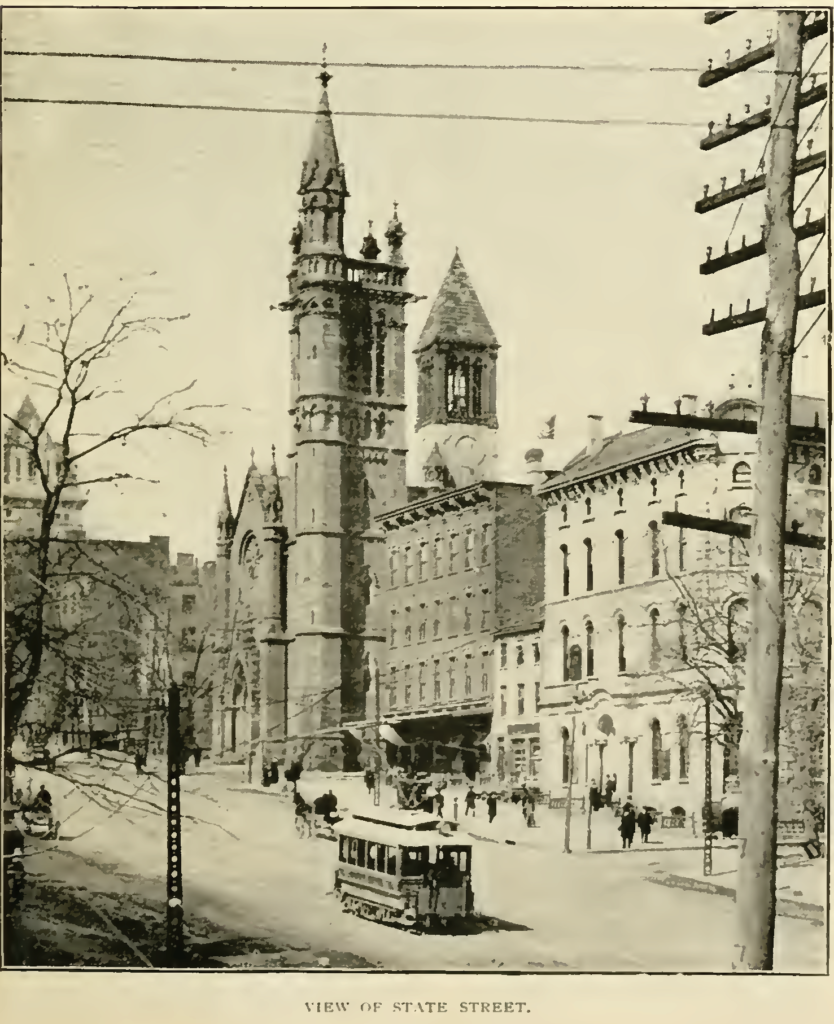
In 1891, the publishers of “The New Albany” seemed to feel the
city needed a pep talk. While extolling the wonders of what then was still one of the larger cities in America, it was clear they were also looking back a bit, bemoaning the loss of industry that had moved west. Even so, Albany was still growing, and rapidly, and changing from an old city of mud and horses into a modern, paved, electric city, which they dubbed The New Albany:
“The New Albany is no longer a mere figment of the brain – another Atlantis, never to be realized or seen by mortal eyes. The New Albany exists. It is not a plant of mushroom growth. The change has, in fact, been so
gradual that far too many of our citizens refuse to recognize or admit that it has taken place. They are still living in the Albany of 1850, or 1830; some of them in the Albany of 1800, with eyes shut to the growth, the development, and the spirit of the last decade.“And yet, when you stop to think of it, the changes brought about in this city since 1881 are something marvelous.”
“The New Albany” then takes note of a few (way more than a few) of those changes, beginning with the north end. Over the next few entries, I’ll do the same, noting which of these wonders of The New Albany still stand,
which are gone, and which I just can’t figure out anything about.
1st. The North Broadway improvement. Ten years ago the great avenue between Albany and the north was a quagmire. Above Pleasant street there was neither pavement, nor sewer, nor sidewalk. To-day a
noble thoroughfare, with flagged sidewalks, granite block and underneath it a capacious sewer, stretches to the city line.
Well, today North Broadway is mostly the remnants and ruins of the turn of that century. Some of the sidewalks might be the originals, and the sewers definitely are, in this stretch of warehousey wasteland. I like the
north end of Broadway, but it’s no longer the pride of the city.
2d. The Broadway electric road. Ten years ago wornout old horses dragged wornout old cars at a sleepy pace toward Troy, at fifteen cents a passenger. To-day handsome and comfortable cars, swiftly propelled by electricity, carry passengers into the heart of our neighboring city, for ten
cents each.
Well, the electric road is gone, but you can still hop a No. 22 bus five or six times an hour and get into the heart of Troy for $1.50. That’s not bad.
3d. The Broadway viaduct. Ten years ago the upper railroad crossing was frightening horses, and killing, on an average, a man a month. By means of the costly, but absolutely necessary viaduct, the terror is wholly abated.
The viaduct still stands, in a forlorn and neglected stretch of Broadway. The horses are no longer frightened.
4th. Clinton avenue. Ten years ago Clinton avenue was worse to travel than the rocky road to Dublin. To-day it is as well paved as any street need to be, and over it electric cars make frequent and speedy
trips.
Today Clinton Avenue is the secret fast way west out of downtown. It doesn’t have electric cars, but it does have a bike lane.
5th. The Hawk street bridge. Much less than ten years ago Canal street formed an almost impassable barrier between Arbor hill and the central part of the city. To-day a strong and graceful structure spans
the gully, and makes access between the two hills as easy now as it was difficult before.
The loss of the Hawk Street Viaduct just about makes me cry. You can read its full story here. Canal street is now Sheridan Avenue, and “gully” is a word that doesn’t see enough use, probably because modern bulldozers have
made it so easy to fill one in.
